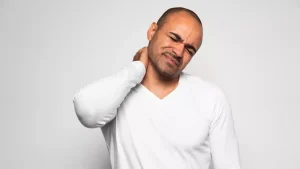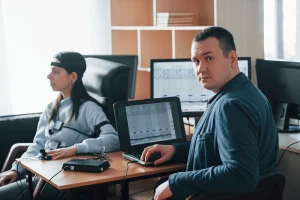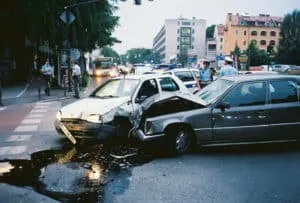The Importance of Immediate Medical Treatment After a Car Accident
Getting into a car accident can be a jarring experience, often leaving individuals in a state of shock and confusion. In such moments, it’s easy to overlook potential injuries and focus solely on the immediate aftermath of the collision. However, the importance of seeking immediate medical treatment after a car accident cannot be stressed enough.
The Critical Window
The adrenaline rush following an accident can mask injuries, leading individuals to believe they are unharmed. Yet, injuries like whiplash, internal bleeding, and soft tissue damage may not manifest symptoms until hours or even days later. Failing to seek timely medical attention during this crucial window can result in long-term complications, pain, and even disability.
Consequences of Neglect
Neglecting to seek prompt medical care after an accident can have severe consequences. Undetected injuries may worsen over time, leading to chronic pain, mobility issues, and reduced quality of life. Additionally, postponing treatment can weaken potential legal claims if injuries are discovered later, making it harder to connect them to the accident.
Key Treatment Options
In this article, we’ll delve into various treatment options that should be considered immediately after a car accident. These options range from emergency medical care for severe injuries to conservative treatments such as physical therapy, acupuncture, and chiropractic care for less severe discomfort. Each type of treatment plays a crucial role in ensuring both your physical well-being and your legal rights.
As we proceed, we’ll explore the differences between emergency care and urgent care, highlight the non-invasive nature of conservative treatments, and emphasize the long-term benefits of seeking timely medical attention. Remember, immediate treatment not only aids your recovery but also safeguards your legal claims in case of further complications down the line.
The Crucial First Steps After a Car Accident: Seeking Immediate Treatment
After a car accident, your immediate focus should be on your well-being and safety. Seeking prompt medical attention is not just a recommendation; it’s a critical step that can significantly impact your health and potential legal claims. In this section, we will delve into the urgency of seeking treatment, the importance of identifying serious injuries, and the symptoms that should never be ignored.
The Urgency of Seeking Treatment
The moments following a car accident can be overwhelming, but seeking medical attention should be your top priority. Even if you believe your injuries are minor, it’s essential to undergo a thorough medical evaluation. Some injuries, particularly internal ones, might not exhibit immediate symptoms. Timely medical assessment ensures that any potential issues are detected early, allowing for prompt treatment and prevention of complications.
Identifying Serious Injuries and Seeking Emergency Care
While some injuries may be readily apparent, others may not manifest immediately. It’s crucial to be vigilant about any signs of severe injury. If you experience any of the following symptoms, seeking emergency medical care is imperative:
- Severe Pain: Intense and persistent pain, especially in the abdomen, head, neck, or chest, could indicate internal injuries.
- Difficulty Breathing: Breathing difficulties could signify lung or chest injuries that require immediate attention.
- Unconsciousness or Confusion: Loss of consciousness or confusion might indicate head trauma or brain injuries.
- Excessive Bleeding: Profuse bleeding that is difficult to control necessitates immediate medical intervention.
Symptoms Requiring Immediate Medical Attention
Certain symptoms should never be ignored after a car accident, as they may signify underlying issues that require prompt treatment:
- Neck or Back Pain: Pain in these areas could indicate whiplash, spinal injuries, or soft tissue damage.
- Headaches or Dizziness: These symptoms could indicate a concussion or other head injury.
- Numbness or Tingling: These sensations might indicate nerve damage or other serious issues.
- Vision Changes: Blurred vision or visual disturbances could signal head or eye injuries.
Remember, the adrenaline rush that often follows an accident can mask pain and symptoms. Err on the side of caution and seek medical evaluation to ensure your well-being. Prompt treatment not only aids your recovery but also establishes a vital medical record that can be valuable for insurance claims or legal actions.
In the upcoming sections, we will explore the various types of treatment options available after a car accident, including emergency care, primary care, specialist care, and conservative treatments like physical therapy, chiropractic care, and acupuncture. It’s essential to understand these options to make informed decisions about your health and recovery journey.
Emergency Medical Care: When Every Second Counts
When it comes to car accidents, some injuries demand immediate attention to prevent life-threatening complications. Emergency medical care plays a pivotal role in addressing severe injuries promptly and effectively. In this section, we will delve into the critical role of emergency care, highlight situations that necessitate urgent medical attention, and present real-life examples of accidents where swift intervention made all the difference.
The Critical Role of Emergency Care
Emergency medical care is designed to handle critical and life-threatening situations. Medical professionals in emergency departments are trained to provide swift assessments, stabilize patients, and initiate necessary treatments. They have the expertise to address severe injuries that, if left untreated, could lead to permanent disabilities or even fatalities.
Scenarios Requiring Immediate Emergency Care
There are several scenarios after a car accident where seeking emergency medical care is paramount:
- Head Trauma: Any head injury with loss of consciousness, confusion, severe headaches, or vomiting requires immediate attention to assess for brain injuries.
- Severe Bleeding: Profuse bleeding that cannot be controlled indicates potential internal injuries or major blood vessel damage.
- Difficulty Breathing: Breathing difficulties may point to chest injuries, lung damage, or internal bleeding.
- Broken Bones: Compound fractures, where bones pierce the skin, require urgent care to prevent infections and complications.
- Spinal Injuries: Any potential spinal injury demands immediate stabilization to prevent further damage.
Real-Life Examples of Swift Emergency Interventions
Real-life accidents illustrate the critical importance of emergency medical care:
Case A: Head Trauma: A driver involved in a high-speed collision suffered head trauma and initially dismissed it as minor. However, as headaches persisted, he sought emergency care, revealing a severe concussion that required immediate treatment.
Case B: Severe Bleeding: A passenger involved in a T-bone collision experienced significant bleeding. Quick intervention at the emergency department identified internal injuries and prevented life-threatening complications.
Case C: Spinal Injury: Following a rear-end collision, a passenger complained of neck pain. Immediate medical evaluation revealed spinal cord compression, leading to timely treatment and preventing paralysis.
In these examples, prompt emergency medical care was pivotal in ensuring timely diagnosis and appropriate intervention. Remember, if you encounter any symptoms of severe injuries or experience a situation that demands immediate attention, do not hesitate to call emergency services. Timely intervention can make all the difference in the outcome of your injuries and your overall well-being.
In the following sections, we will explore primary care options after a car accident, including visiting your primary care physician and seeking specialist care. These steps are crucial in addressing injuries that might not require immediate emergency care but still necessitate medical attention for proper healing and recovery.
Urgent Care vs. Emergency Care: Making Informed Choices
Navigating the aftermath of a car accident involves making informed decisions about seeking medical care. Understanding the distinctions between urgent care and emergency care is crucial for receiving the appropriate treatment based on the severity of your injuries. In this section, we will delve into the differences between these two types of care, discuss scenarios where urgent care is suitable for post-accident discomfort, and provide insights on when to opt for emergency care for potentially serious injuries.
Distinguishing Between Urgent Care and Emergency Care
Urgent Care: Urgent care centers are equipped to handle non-life-threatening injuries and illnesses that require immediate attention but are not severe enough to warrant a visit to the emergency room. They offer extended hours and can provide treatment for a range of issues, such as minor fractures, cuts, bruises, and mild concussions.
Emergency Care: Emergency departments are designed to address life-threatening injuries and illnesses that require immediate and intensive care. These include severe head trauma, profuse bleeding, chest pain, difficulty breathing, and spinal injuries.
When to Choose Urgent Care
Urgent care is appropriate for cases where injuries or discomfort are not life-threatening but still require timely attention. Consider visiting an urgent care facility if you experience:
- Minor Cuts and Bruises: For minor injuries that require cleaning, stitches, or bandaging.
- Mild Whiplash or Muscle Strains: When you have neck or back pain that is manageable and not accompanied by severe symptoms.
- Minor Concussions: If you experience mild head injuries without loss of consciousness or severe symptoms.
Opting for Emergency Care for Severe Injuries
Choosing emergency care is essential when you encounter situations that indicate potentially severe injuries:
- Loss of Consciousness: If you or anyone involved in the accident loses consciousness, immediate medical evaluation is necessary.
- Severe Bleeding: Profuse bleeding that cannot be controlled requires emergency intervention to prevent further complications.
- Difficulty Breathing: Breathing difficulties may signal lung injuries or other critical conditions.
- Head Trauma with Symptoms: Head injuries with severe headaches, confusion, vomiting, or other concerning symptoms warrant emergency care.
Realizing the Importance of Informed Choices
Making the right choice between urgent care and emergency care depends on the severity of your injuries and the symptoms you experience. When in doubt, it’s always safer to opt for emergency care, especially if your symptoms indicate potentially serious conditions. Your well-being is the priority, and seeking prompt and appropriate medical attention is essential for proper healing and recovery.
In the following sections, we will explore additional treatment options available to individuals who have been in car accidents. These options, such as physical therapy, acupuncture, and chiropractic treatment, can provide relief and support for your recovery journey.
Conservative Treatment Approaches for Post-Accident Relief
In the aftermath of a car accident, seeking effective treatment is crucial not only for immediate relief but also for long-term recovery. Conservative treatment options, such as physical therapy, acupuncture, and chiropractic care, offer non-invasive approaches to alleviate pain, restore mobility, and promote healing. In this section, we will explore these treatment methods, how they contribute to post-accident relief, and share real success stories from individuals who have benefited from them.
1. Physical Therapy
What Is Physical Therapy: Physical therapy involves specialized exercises and techniques aimed at improving muscle strength, flexibility, and overall function. Physical therapists tailor treatment plans to address specific injuries and guide patients through exercises that aid in recovery.
How It Works: Physical therapy can help individuals regain mobility, reduce pain, and prevent further complications. Therapists use various techniques, such as manual therapy, stretching, and exercises, to promote healing and restore normal movement.
Success Story: Emily, who suffered from whiplash after a car accident, found relief through physical therapy. With a personalized exercise program, she gradually regained neck mobility and alleviated muscle stiffness, allowing her to resume daily activities pain-free.
2. Acupuncture
What Is Acupuncture: Acupuncture is an ancient Chinese practice that involves inserting thin needles into specific points on the body to stimulate energy flow. It’s believed to promote natural healing and improve overall well-being.
How It Works: Acupuncture may help reduce pain, inflammation, and muscle tension by releasing endorphins and promoting blood circulation. It can be particularly effective for treating headaches, back pain, and muscle soreness.
Success Story: Mark, who experienced persistent back pain following a car accident, turned to acupuncture as a complementary treatment. Over several sessions, he noticed a significant reduction in pain and increased relaxation.
3. Chiropractic Care
What Is Chiropractic Care: Chiropractic care focuses on spinal health and its impact on the nervous system. Chiropractors use manual adjustments to realign the spine and address issues such as misalignments, muscle imbalances, and joint dysfunction.
How It Works: Chiropractic adjustments aim to restore proper alignment and function to the spine, which can alleviate pain, improve mobility, and enhance overall nervous system function.
Success Story: Sarah, who suffered from neck pain after a car accident, sought chiropractic care. Regular adjustments helped relieve tension in her neck muscles and improve her range of motion, leading to reduced pain and discomfort.
Embracing Holistic Approaches to Recovery
Conservative treatments offer holistic approaches to healing, focusing on addressing the root causes of pain and discomfort. These methods not only provide relief but also support the body’s natural healing processes. By considering these treatment options and working closely with experienced professionals, individuals can enhance their recovery journey and regain their quality of life.
As we move forward, we’ll delve into the importance of seeking treatment immediately after an accident and the potential consequences of neglecting to do so. We’ll also provide insights into distinguishing between urgent care and emergency care to make informed choices about the appropriate level of medical attention required.
The Non-Invasive Nature of Conservative Treatments
After a car accident, individuals often seek treatments that prioritize their well-being without adding further stress to their bodies. Conservative treatments, such as physical therapy, acupuncture, and chiropractic care, offer a non-invasive approach to post-accident recovery. In this section, we will emphasize the benefits of these non-invasive treatments, explain why they are a preferable choice after accidents, and provide insights from medical experts regarding their safety and effectiveness.
The Appeal of Non-Invasive Care
Non-invasive treatments focus on enhancing the body’s natural healing processes without resorting to surgical procedures or heavy medications. For accident survivors, this approach provides several compelling advantages:
- Reduced Risk: Non-invasive treatments carry minimal risks compared to surgical interventions, reducing the chances of complications or adverse reactions.
- Quicker Recovery: With non-invasive treatments, there is typically less downtime, allowing individuals to resume their regular activities sooner.
- Holistic Healing: Non-invasive methods address the root causes of pain and discomfort, promoting holistic healing rather than simply masking symptoms.
Medical Perspectives on Non-Invasive Treatments
Medical professionals often recommend non-invasive treatments as a first-line approach, especially in cases where surgery may not be necessary. These treatments align with the body’s natural healing mechanisms, making them a safer and more patient-centric choice. Experts highlight the following points:
Orthopedic Specialist: “Non-invasive treatments like physical therapy and chiropractic care can be highly effective in post-accident recovery. They allow patients to actively participate in their healing process, improve mobility, and manage pain without the risks associated with surgery.”
Naturopathic Doctor: “Acupuncture offers a holistic approach to pain relief. By stimulating specific points on the body, it triggers the release of endorphins and supports the body’s self-healing abilities. This approach aligns with the principles of naturopathic medicine, promoting overall wellness.”
Understanding the Benefits: Patient Perspective
Many individuals have experienced the benefits of non-invasive treatments firsthand. These approaches empower patients to take an active role in their recovery journey, promoting comfort and confidence. By choosing non-invasive treatments, individuals can prioritize their well-being, promote natural healing, and enjoy a smoother recovery process. In the upcoming sections, we will delve into understanding the crucial steps to take immediately after an accident and explore the key differences between urgent care and emergency care for post-accident discomfort.
Beyond the Initial Treatment: Long-Term Recovery and Prevention
Seeking immediate treatment after a car accident is crucial, but the journey to recovery extends beyond the initial phases. In this section, we will delve into the significance of continued treatment for sustained recovery and address potential challenges that might arise if post-accident discomfort is left untreated. Moreover, we’ll provide essential tips for preventing long-term complications through proper post-accident care.
The Importance of Continued Treatment
While immediate treatment addresses acute symptoms, the underlying injuries may require ongoing attention. Discomfort that persists, worsens, or resurfaces over time could be indicative of deeper issues that necessitate extended care. Failing to address these issues can lead to chronic pain, reduced mobility, and compromised quality of life.
Addressing Long-Term Challenges
Neglecting post-accident discomfort can have serious repercussions. What may start as minor pain could develop into chronic conditions that significantly impact daily life. For instance, untreated injuries might lead to muscle imbalances, joint instability, or nerve damage. Additionally, delayed treatment can hinder the body’s healing process and potentially necessitate more invasive interventions later.
Preventing Long-Term Complications
Proactive steps can significantly influence long-term recovery and prevent potential complications:
- Follow Medical Recommendations: Adhere to your healthcare provider’s advice regarding treatment plans, exercises, and follow-up appointments. Consistency is key to successful recovery.
- Monitor Your Body: Pay attention to any changes or new symptoms that arise after the initial treatment. Communicate these changes to your healthcare provider promptly.
- Maintain a Healthy Lifestyle: Proper nutrition, hydration, and regular exercise support your body’s healing mechanisms. Engaging in activities that align with your treatment plan can contribute to a quicker recovery.
- Prioritize Rest: Allow your body the necessary rest to recover. Adequate sleep is crucial for healing and overall well-being.
- Stay Informed: Educate yourself about your injuries and recovery process. This knowledge empowers you to make informed decisions and actively participate in your healing journey.
In the subsequent sections, we will explore the key differences between urgent care and emergency care, providing insights into when each is most appropriate for post-accident discomfort. Additionally, we’ll delve into the effectiveness of conservative treatment approaches like physical therapy, acupuncture, and chiropractic care, shedding light on their benefits and the non-invasive nature of these methods.
The Holistic Approach: Integrating Medical Care and Legal Protection
Recognizing the interplay between medical care and legal protection is essential for accident victims seeking comprehensive recovery. In this section, we will delve into the critical connection between timely medical treatment and the strengthening of personal injury claims. Additionally, we will highlight the pivotal role that experienced attorneys play in guiding accident victims through this intricate process.
The Symbiotic Relationship
Medical care and legal claims are intertwined in the aftermath of a car accident. Seeking immediate medical attention not only addresses injuries but also creates a documented record of your condition. This medical documentation serves as crucial evidence that substantiates the extent of your injuries, their impact on your life, and the connection between the accident and your medical needs.
Strengthening Your Claim
Timely medical treatment contributes significantly to the strength of your personal injury claim. Insurance companies and opposing parties often scrutinize claims to identify gaps in medical care. By promptly seeking medical attention, you demonstrate that your injuries were substantial enough to warrant immediate care, and you prioritize your health.
The Role of an Attorney
Navigating the complexities of both medical treatment and legal proceedings can be daunting. An experienced personal injury attorney serves as a valuable advocate in this journey. Attorneys understand the intricate relationship between medical records and legal claims. They can ensure that your medical documentation aligns with the legal requirements of your case, safeguarding your rights and maximizing your claim’s potential.
An attorney’s involvement offers additional advantages:
- Legal Expertise: Attorneys are well-versed in personal injury laws and regulations. They can navigate legal complexities, address potential challenges, and negotiate with insurance companies on your behalf.
- Thorough Investigation: Attorneys conduct thorough investigations to gather evidence that supports your claim. This may include medical records, accident reports, witness statements, and expert opinions.
- Negotiation and Litigation: Attorneys are skilled negotiators who can work to secure a fair settlement with insurance companies. If necessary, they can also represent you in court to ensure your rights are protected.
By integrating medical care and legal protection, you create a comprehensive approach to recovery. In the following sections, we will provide insights into the long-term effects of untreated injuries and strategies for preventing complications through proper post-accident care.
Case Studies: Illustrative Recovery Journeys
In this section, we will explore hypothetical case studies that illustrate the positive impact of prompt medical treatment on individuals’ recovery after accidents. These scenarios serve as examples to underscore the significance of seeking timely care and the potential benefits it can bring.
Case Study 1: Accelerated Healing Through Swift Action
Imagine Sarah, a fictional character, involved in a rear-end collision resulting in neck and back discomfort. Recognizing the importance of immediate care, she promptly visits a medical professional. Her swift action allows her to receive a tailored treatment plan, including physical therapy and chiropractic adjustments. Through consistent treatment and adherence to her plan, Sarah experiences alleviation of pain and restoration of mobility. By prioritizing her health, she not only accelerates her recovery but also positions herself for a successful personal injury claim.
Case Study 2: Comprehensive Care Leading to Positive Outcomes
Consider Mark, another hypothetical individual, who sustains multiple injuries, including fractures and soft tissue damage, in an accident. Mark’s dedication to prompt medical treatment sets the foundation for comprehensive recovery. His medical team collaborates to create a holistic approach that involves surgery, physical therapy, and pain management techniques. Addressing his injuries holistically, Mark regains his quality of life and minimizes potential long-term complications. His journey underscores the importance of immediate and thorough medical care.
Exemplifying the Importance of Timely Treatment
These illustrative case studies highlight that timely medical treatment can positively influence recovery outcomes. By seeking care promptly, individuals can address injuries effectively, prevent complications, and ensure their overall well-being. These scenarios also underscore the significance of seeking legal guidance from a qualified personal injury attorney, who can assist in navigating the complexities of medical care and legal protection. By drawing insights from these illustrative examples, readers are encouraged to prioritize their health and make informed choices that contribute to their recovery and overall quality of life.
Exploring Comprehensive Resources for Post-Accident Recovery
In this section, we delve into a compilation of valuable resources that offer in-depth insights into various aspects of post-accident treatment and recovery. These resources are designed to empower readers with comprehensive information and guidance for making informed decisions about their health and well-being after a car accident.
1. Emergency Medical Care Guidelines
Understanding when and where to seek emergency medical care is crucial. The American College of Emergency Physicians provides guidelines on identifying severe injuries and deciding when urgent medical attention is necessary. These guidelines can aid in determining the appropriate course of action immediately after an accident.
2. Conservative Treatment Options
To explore conservative treatment options, such as physical therapy, acupuncture, and chiropractic care, the American Physical Therapy Association, American Academy of Acupuncture, and American Chiropractic Association offer information on how these treatments can alleviate pain and promote recovery without invasive procedures.
3. Injury Prevention and Rehabilitation
For those interested in injury prevention and rehabilitation strategies, the National Institute of Arthritis and Musculoskeletal and Skin Diseases provides resources on a wide range of musculoskeletal conditions, including those resulting from accidents. Their materials offer guidance on maintaining and regaining function after injuries.
4. Legal Protection and Advocacy
Understanding the legal aspects of post-accident care is equally important. Organizations like the American Bar Association offer resources on personal injury law, helping readers navigate legal avenues to protect their rights and seek compensation.
5. Comprehensive Health and Wellness Guides
To address the broader spectrum of health and wellness, resources like WebMD provide comprehensive articles on various health topics, including recovering from accidents, managing pain, and maintaining overall well-being.
Empowering Readers with Knowledge
These resources serve as comprehensive guides for readers seeking detailed information on post-accident treatment and recovery. By exploring reputable sources, individuals can better understand their options, make informed decisions, and take proactive steps towards their physical and legal well-being. Remember that seeking professional medical and legal advice remains a critical aspect of post-accident care, ensuring the best possible outcome for your recovery journey.
Empowering Yourself: Prioritizing Health and Well-Being After an Accident
As we reach the conclusion of this comprehensive guide, let’s recap the crucial insights you’ve gained and emphasize the proactive steps you can take to ensure your health and well-being in the aftermath of a car accident.
1. Knowledge Is Power
Throughout this article, you’ve learned about the immediate actions you should take after a car accident. From understanding the urgency of seeking treatment to differentiating between urgent and emergency care, you’re armed with knowledge that can significantly impact your recovery journey.
2. Immediate Treatment Matters
The importance of seeking medical treatment without delay cannot be overstated. Whether you’re experiencing soreness or more severe symptoms, prioritizing your health by seeking appropriate medical attention can lead to faster recovery and prevent potential long-term complications.
3. Health and Legal Well-Being
Remember, seeking medical treatment is not only critical for your physical recovery but also for your legal protection. Timely medical care establishes a clear link between your injuries and the accident, which can play a pivotal role in any potential legal claims for compensation.
4. Prevention Through Care
Taking a proactive approach to your recovery involves not only seeking initial treatment but also continuing your care as needed. Long-term recovery requires ongoing attention and adherence to treatment plans. Prioritize your well-being by staying committed to your recovery journey.
5. Seek Professional Guidance
If you’ve sustained injuries due to an accident, consider consulting with a personal injury attorney. Legal professionals experienced in these cases can provide valuable insights and guide you through the legal process to ensure your rights are protected and your compensation is pursued.
Empowerment Through Action
As you navigate the aftermath of a car accident, you possess the tools to make informed decisions about your health and legal rights. By prioritizing your well-being, seeking prompt medical treatment, and considering the guidance of legal experts, you’re taking active steps toward your own empowerment.
Remember, you’re not alone on this journey. Health professionals, legal experts, and resources are available to support you. By taking action now, you’re setting the stage for a smoother recovery and a more secure future.
Prioritize Your Health and Secure Your Future
In the aftermath of a car accident, your health and well-being should be paramount. We’ve covered a wealth of information in this article, emphasizing the critical steps to take immediately after an accident to ensure your recovery and safeguard your legal rights.
Immediate Action for Long-Term Benefits
From understanding the urgency of seeking treatment to learning about different treatment options, you now possess the knowledge to make informed decisions. Remember, seeking medical attention promptly can expedite your recovery process and prevent potential complications down the road.
The Intersection of Health and Legal Protection
Your well-being doesn’t exist in isolation. Seeking timely medical care not only aids your physical healing but also strengthens your legal standing. By establishing a connection between your injuries and the accident, you’re setting the groundwork for any potential legal claims.
Empowerment Through Knowledge
We’ve explored the nuances of urgent care versus emergency care, the benefits of conservative treatments, and the holistic approach to recovery. With this comprehensive understanding, you’re equipped to prioritize your health and make proactive choices that resonate long after the accident.
Your Next Steps
As you move forward, consider consulting with healthcare professionals for personalized treatment plans. Additionally, don’t hesitate to seek guidance from legal experts who specialize in personal injury cases. By taking these steps, you’re actively asserting your rights and securing your future.
Remember, your well-being matters, and so does your ability to seek the compensation you deserve. The information provided in this article empowers you to make the best choices for your health and legal protection. Should you need professional legal assistance, you can contact Phoong Law at 866-GOT-PAIN or email us for expert guidance.
As you navigate the road to recovery, trust that you’re equipped with the knowledge to thrive. By prioritizing your health and legal protection, you’re taking significant steps towards a brighter future.
Legal Disclaimer: The information provided in this article is for general informational purposes only and should not be considered as legal advice. The content is not intended to create an attorney-client relationship, and any reliance on the information provided is solely at your own risk. Laws and regulations may vary by jurisdiction and can change over time. Seek professional legal advice from a qualified attorney to address your specific situation. The authors, publishers, and Phoong Law Corp assume no liability for any potential consequences arising from the use of this information. Always consult with a licensed attorney for guidance tailored to your circumstances.
























